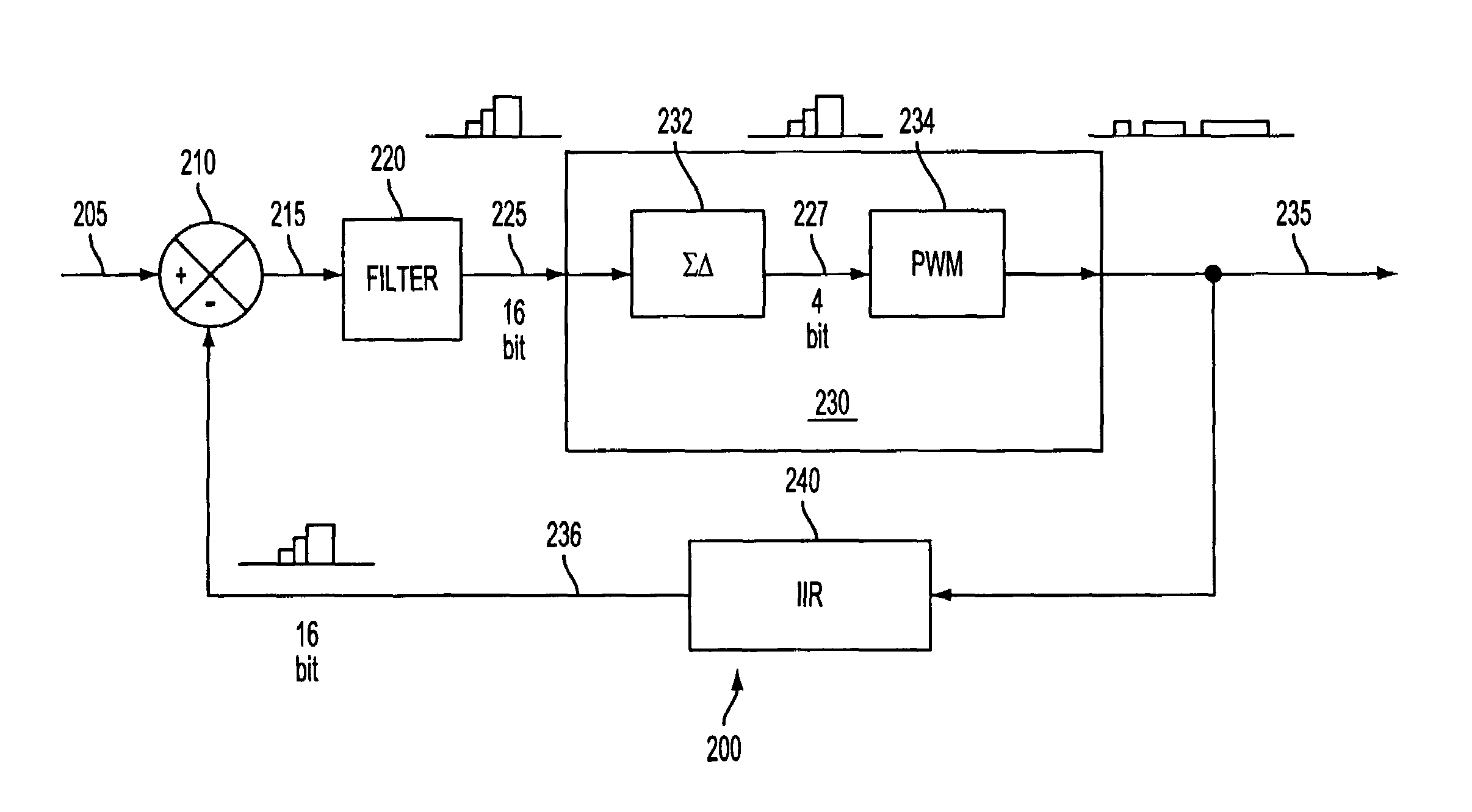Device and method for signal processing
a signal processing and digital signal technology, applied in the field of signal processing technology, can solve the problems of insufficient performance, inability to easily convert digital output from a sigma-delta modulator into an analog voltage,
- Summary
- Abstract
- Description
- Claims
- Application Information
AI Technical Summary
Benefits of technology
Problems solved by technology
Method used
Image
Examples
Embodiment Construction
[0030]Various embodiments of devices, systems and methods in accordance with embodiments of the present invention will now be described with reference to the drawings.
[0031]In one embodiment of the present invention, a signal processor 200 receives a digital wide-bit input signal and uses feedback that is entirely in the digital domain to correct for any error that may be introduced into the output signal 235 by the process of pulse width modulating the input signal 205. Various embodiments of the present invention may include, for example, (1) an integrated circuit chip 501 for use in an optical disk player (e.g., a digital versatile disk (DVD) player), wherein the chip 501 contains at least two signal processors 200-1, 200-2 (i.e., one for left channel output and the other for right channel output), (2) an integrated circuit chip 551 for use in a surround sound audio power amplifier, wherein the chip 551 may contain eight signal processors 200-1 to 200-8 (i.e., one for each of eig...
PUM
 Login to View More
Login to View More Abstract
Description
Claims
Application Information
 Login to View More
Login to View More - R&D
- Intellectual Property
- Life Sciences
- Materials
- Tech Scout
- Unparalleled Data Quality
- Higher Quality Content
- 60% Fewer Hallucinations
Browse by: Latest US Patents, China's latest patents, Technical Efficacy Thesaurus, Application Domain, Technology Topic, Popular Technical Reports.
© 2025 PatSnap. All rights reserved.Legal|Privacy policy|Modern Slavery Act Transparency Statement|Sitemap|About US| Contact US: help@patsnap.com



